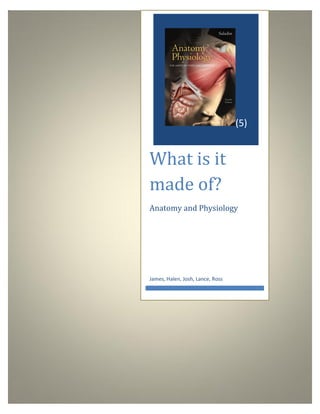
What is it made of
- 1. (5) What is it made of? Anatomy and Physiology James, Halen, Josh, Lance, Ross
- 2. Inorganic Molecules Are molecules that don’t consist of carbon atoms. Inorganic molecules are not usually found in living things but abound in nature or Earth. Some molecules, though, contain carbon and are still inorganic. For instance, a diamond is made up of carbon atoms yet inorganic, basically because of the early notion that an organic molecule is derived or produced by living organism, and diamond is a mineral and not of biological origin. Examples: H2O (WATER), O2 (OXYGEN), NaCl (POTASSIUM CHLORIDE) Citation Organic Molecules Organic Molecule- A molecule that is normally found inand/or living systems and organisms. These molecules share common characteristics and come together to form covalent bonds, which make them form great structures. Anything made up of Hydrogen, Nitrogen, or Oxygen. Examples: methane, ethane, alcohols, and DNA Cell Membrane The cell membrane is a thin semi-permeable membrane that surrounds the cytoplasm of a cell. Its function is to protect the integrity of the interior of the cell by allowing certain substances into the cell, while keeping other substances out. Organelles(4) Centrosome, Cytoplasm, Endoplasmic Reticulum (ER) Golgi Apparatus, Lysosome, Mitochondria Nucleus, Plasma Membrane, and Ribosome